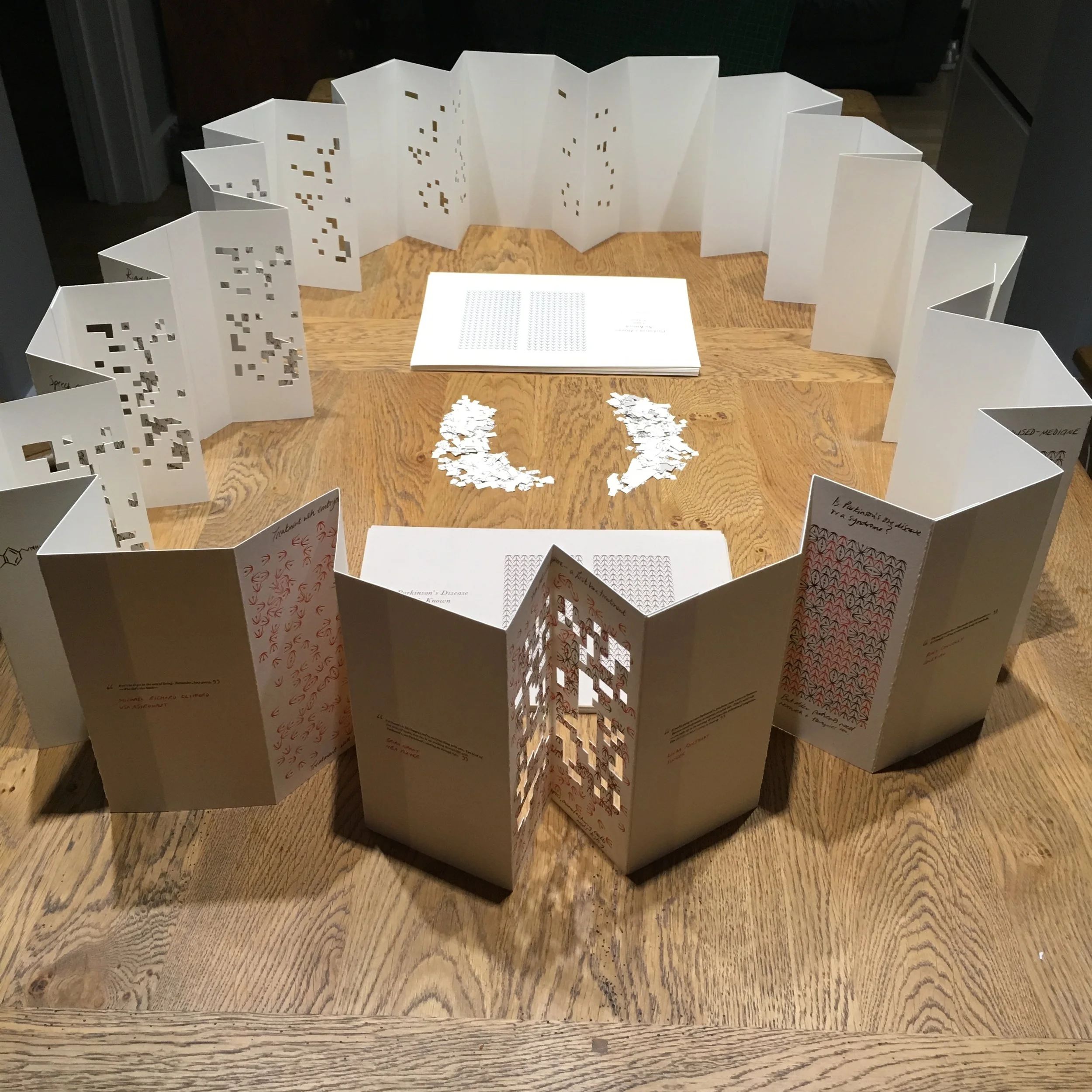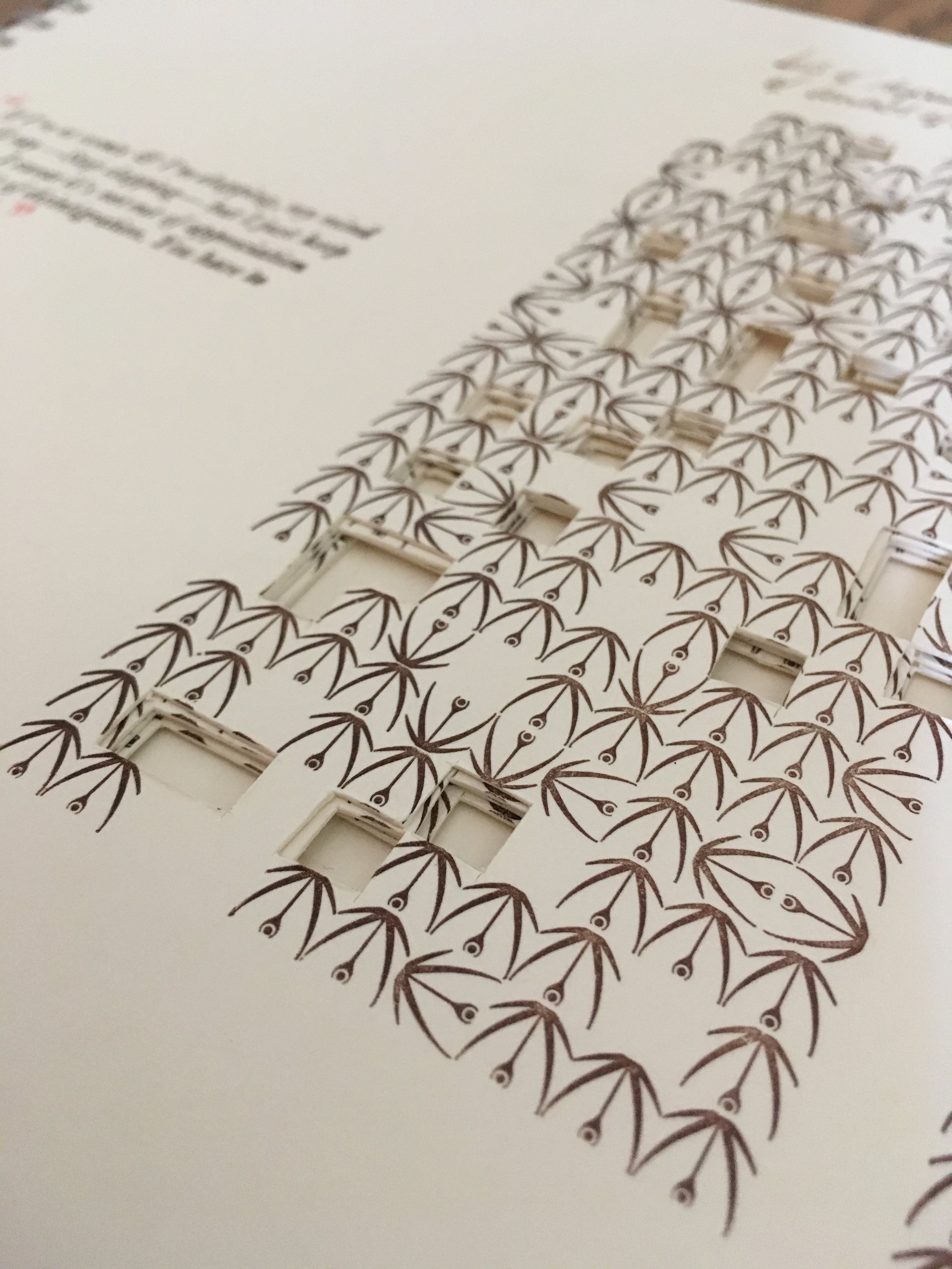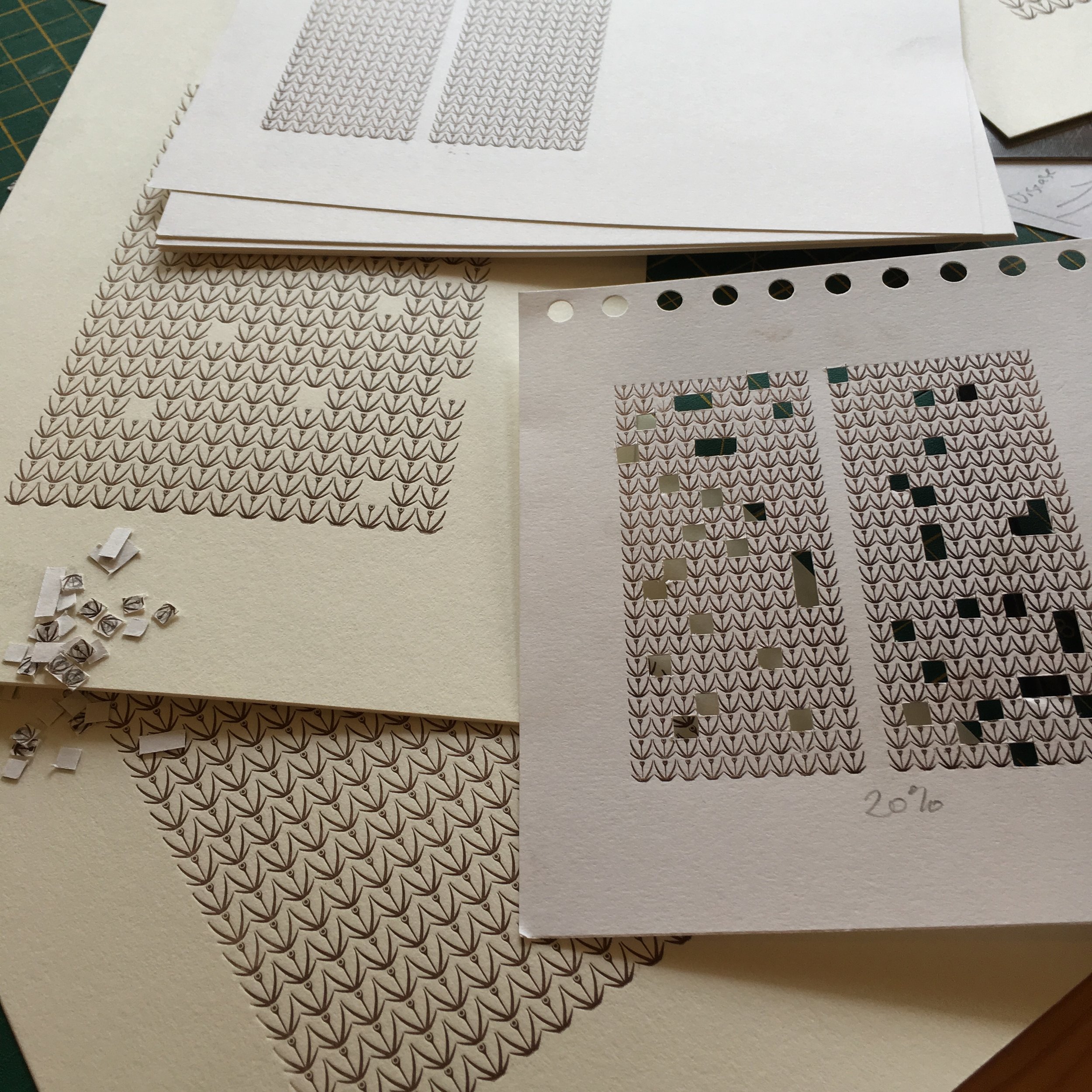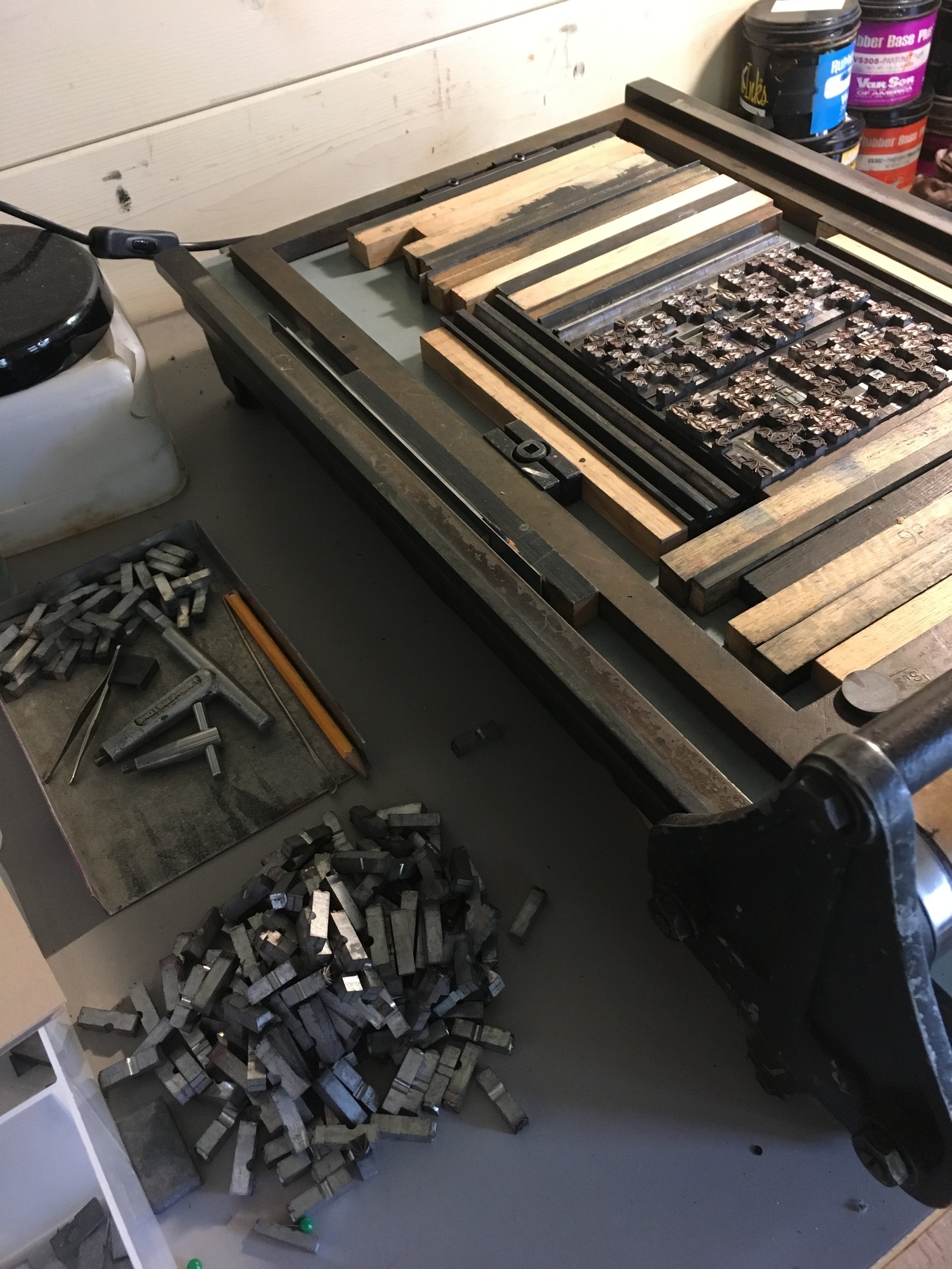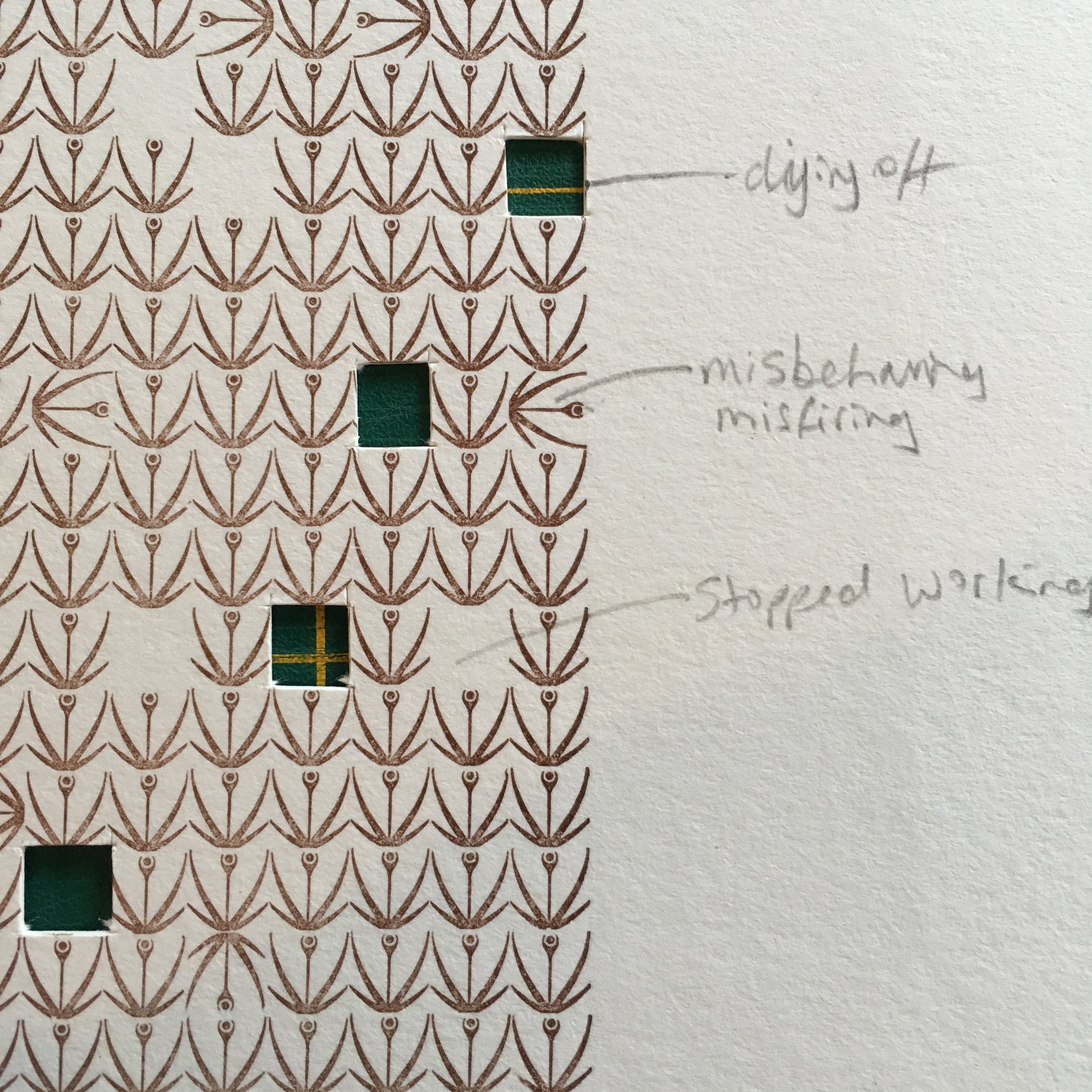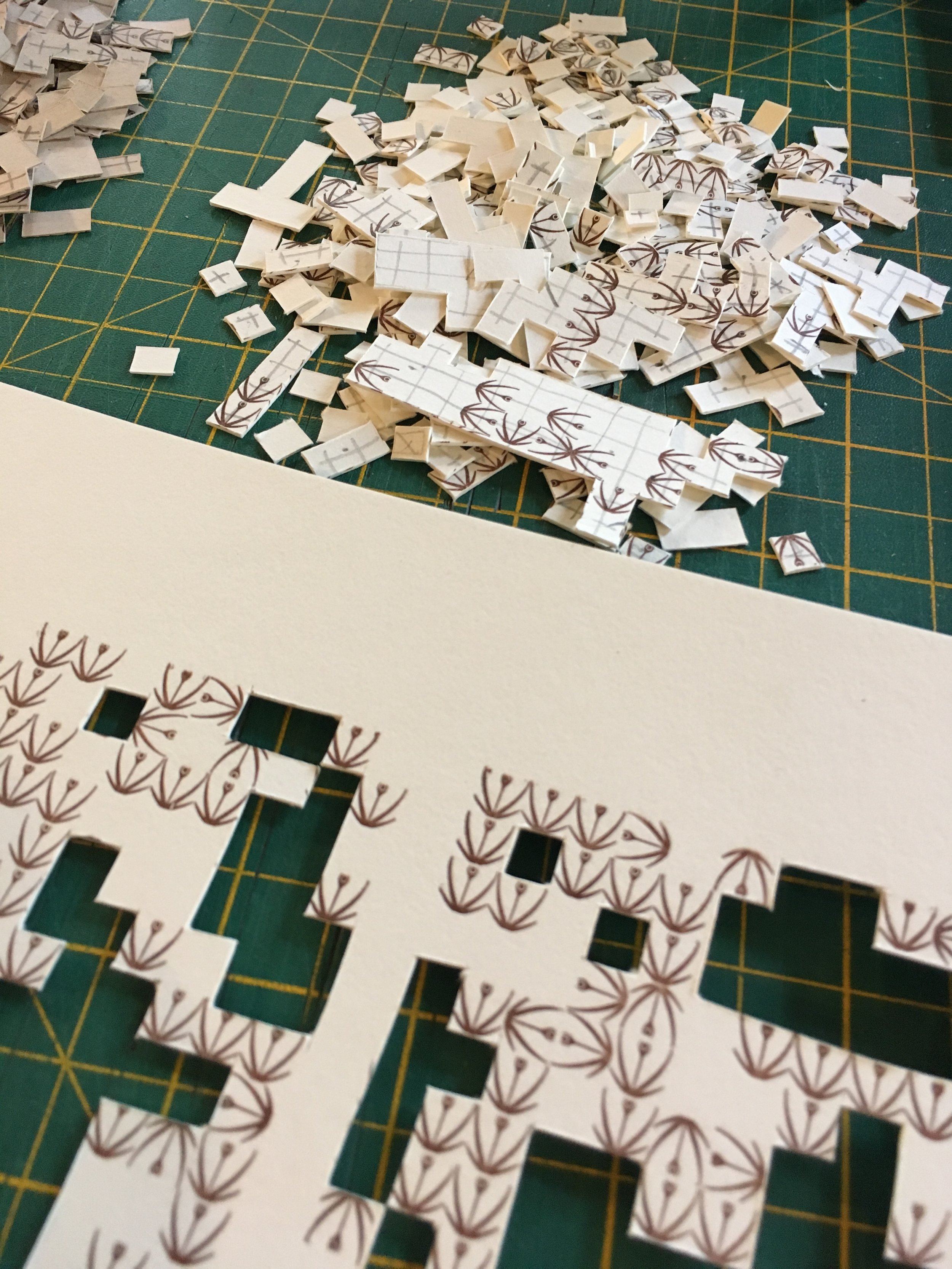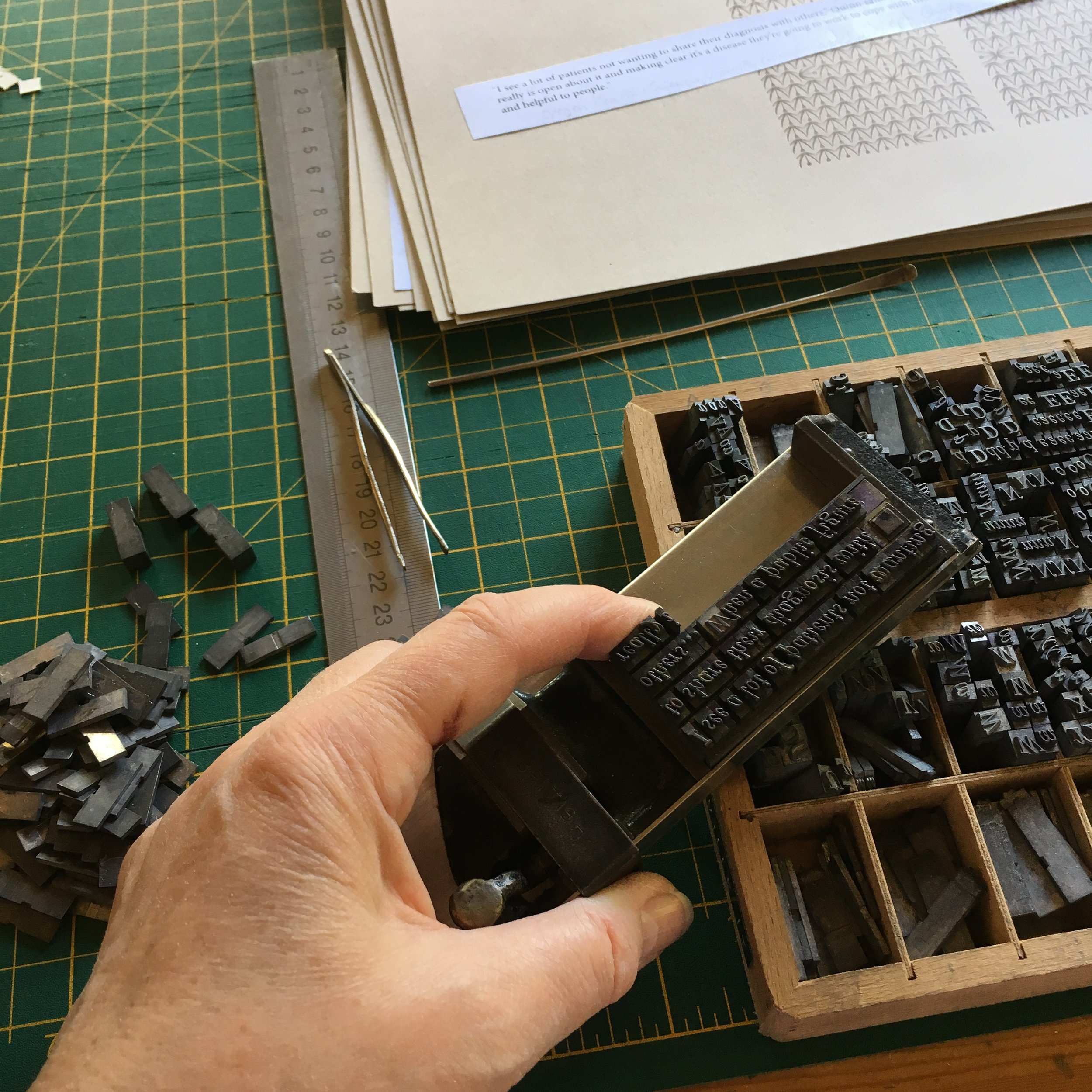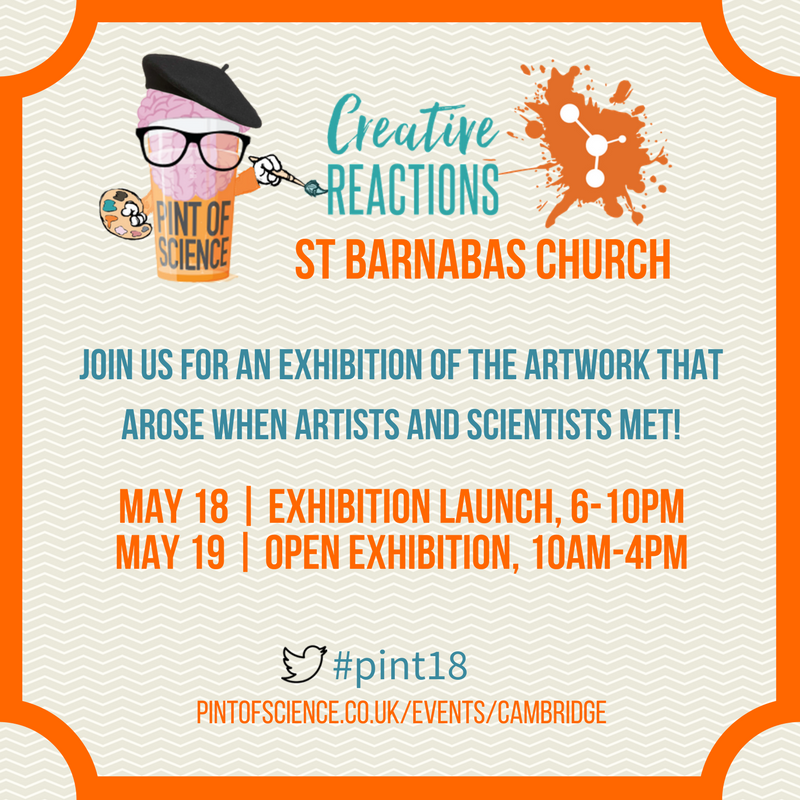I was thrilled to take part in the 2018 Cambridge Pint of Science/Creative Reactions Events. Pint of Science is an annual science festival that takes place every May and brings researchers to local pubs to present their scientific discoveries. Creative Reactions is a collaboration between artists and Pint of Science scientists to produce artworks related to the science presented during Pint of Science. I was paired with Professor Roger Barker who researches into degenerative brain diseases such as Parkinson's and Huntington's Disease. I met with him to discuss his research and then started to work on my Creative Reaction.
I took an experimental approach using metal type glint fleurons to develop a pattern to represent brain cells and then to degenerate the pattern as the disease progressed. As I printed and manipulated more pages I explored the idea of both a flat layout book and a freestanding zig-zag version. My final piece comprises a linked set of three artist books. Together they create a immersive and interactive whole exploring both the progression of Parkinson’s Disease and the stem cell therapy research of Professor Roger Barker.
Book 1 is a freestanding zig-zag formed book used to create an impression of the basal ganglia of the brain which contains the midbrain and substantia nigra.
Book 2& 3 are spiral bound book of unfolded pages on light brown paper representing the healthy brain tissue and cream paper respresenting the dopamine depleted substantia nigra. indicative of Parkinson’s Disease.
Books 2 & 3 are contained within the walls of book 1 along with the remnants of the dopaminergic cells lost through the pages. These fragments are arranged in the shape of the substantia nigra within the midbrain. Handset and letterpress printed text in 18pt, 12pt and 6pt Baskerville italic portrays the common symptom of decreasing handwriting size in this disease, each text being a quote from a Parkinson’s celebrity. Handwritten additions to pages explain symptoms & research as notes in a clinical notebook. Typographic pattern explores and illustrates the progress of the disease in the brain.

